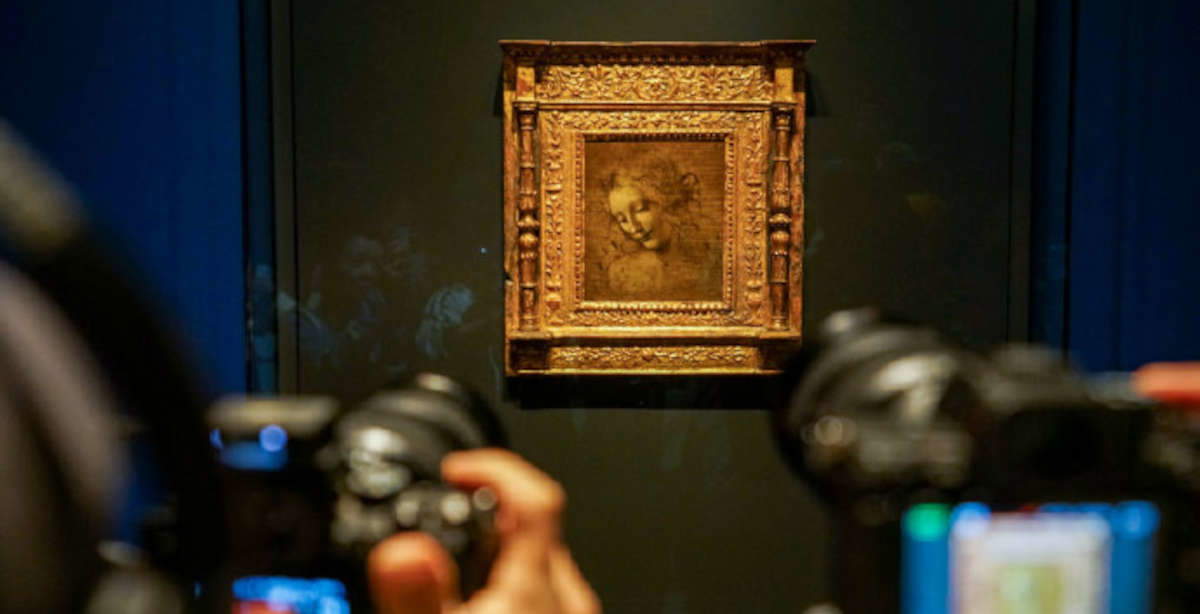It has happened again: an Italian museum quietly deprives itself of one of its most recognizable masterpieces for months to send it to China. This time it was the turn of Parma’s Pilotta , which sent one of its most iconic works, namely Leonardo da Vinci’sScapiliata , to Shanghai for an exhibition that begins today at the Shanghai Museum. In fact, from December 10, 2023 until April 4, 2024, the Chinese museum is hosting the exhibition Who is Leonardo da Vinci, which compares a number of Leonardo’s works, as well as the Scapiliata (and a couple of Michelangelo’s sheets), with Chinese works.
An exhibition that no one in Italy has reported on, as often happens when our works leave for China. And of course, since the Pilotta has not provided any communication on the matter, neither is it known what the museum will receive in return, given that it will be depriving itself for a full five months of one of the works for which visitors go to the National Gallery of Parma. As for the Chinese exhibition, the presentation states that the show aims to “foster cultural exchanges and promote mutual learning between China and Italy.” in addition to the Scapiliata, which together with Parmigianino’sTurkish Slave is perhaps the Pilotta’s most famous work, there are eleven sheets of the Atlantic Codex, on loan from the Biblioteca Ambrosiana, two drawings by Michelangelo that arrive instead from Casa Buonarroti, and paintings by Leonardo’s disciples, including Bernardino Luini’s Jesus Child with the Lamb, also on loan from the Ambrosiana. All together with Chinese works from different historical periods, including works by Liang Kai (12th-13th centuries), Shen Zhou (15th-16th centuries) and Tang Yin (15th-16th centuries), to “tell Chinese visitors about the harmony between East and West with their distinct characteristics and the perfect fusion of art and science,” as the presentation reads. “For the Shanghai Museum,” the institute notes, “this exhibition marks the first-ever attempt to undertake a comparative study of Eastern and Western painting. Using a unique approach to dialogue, we aim to transport our visitors on a transcendent and unimaginable journey through time and space, guiding them to appreciate two artistic landscapes. Here, visitors will encounter the fundamentally different artistic expressions between the two parts of the world during the same era, as well as witness the similarities in Eastern and Western art styles spanning a millennium.” All this should answer the title question. Then there are also reconstructions of “machines” inspired by Leonardo’s drawings, just to make sure nothing is missing.
Francesco D’Arelli, Director of the Italian Cultural Institute, comments on the exhibition as follows: “The ultimate goal of Leonardo’s speculation is painting, and in it all his scholarly work finds its origin and fulfillment, because painting is the deepest and most intimate revelation of man in the world and of his connection with the world, aware of being an active part of the harmony of the universe.” An idea that, D’Arelli explains, is not exclusive to Leonardo’s work, but also recurs in Chinese art.
For the Scapiliata , moreover, this is the second trip to China within a decade. In 2012, in fact, Leonardo’s work had been part of the selection of more than 60 masterpieces from various Italian museums sent to the National Museum in Beijing for the Renaissance in Florence exhibition, which was positively hailed by then Minister of Cultural Heritage Lorenzo Ornaghi. That exhibition featured works from several museums, while now in Shanghai the works come only from Pilotta, Ambrosiana and Casa Buonarroti, the three institutions that worked on organizing the review.It is questionable that the Parma museum is again depriving itself of one of its best-known works in order to send it to an exhibition that does not seem to be supported by a compelling project, and where, if the ultimate intent is to foster cultural exchanges between Italy and China, it could have been replaced by any other less “iconic” work.
 |
| Leonardo da Vinci's Scapiliata for 5 months in China. The Pilotta without its iconic work |
Warning: the translation into English of the original Italian article was created using automatic tools. We undertake to review all articles, but we do not guarantee the total absence of inaccuracies in the translation due to the program. You can find the original by clicking on the ITA button. If you find any mistake,please contact us.